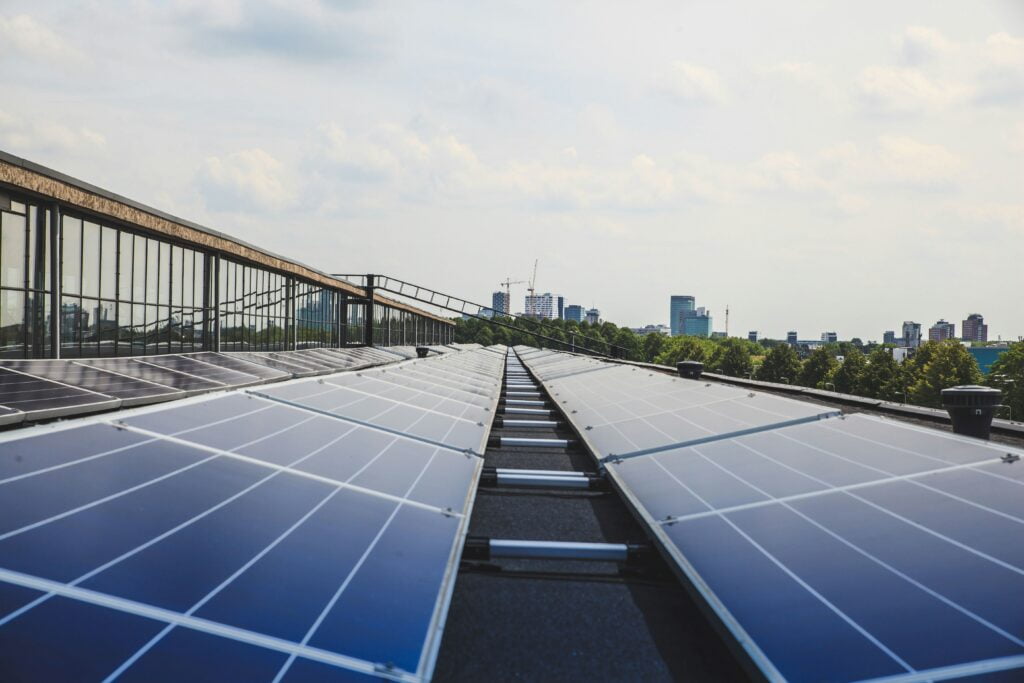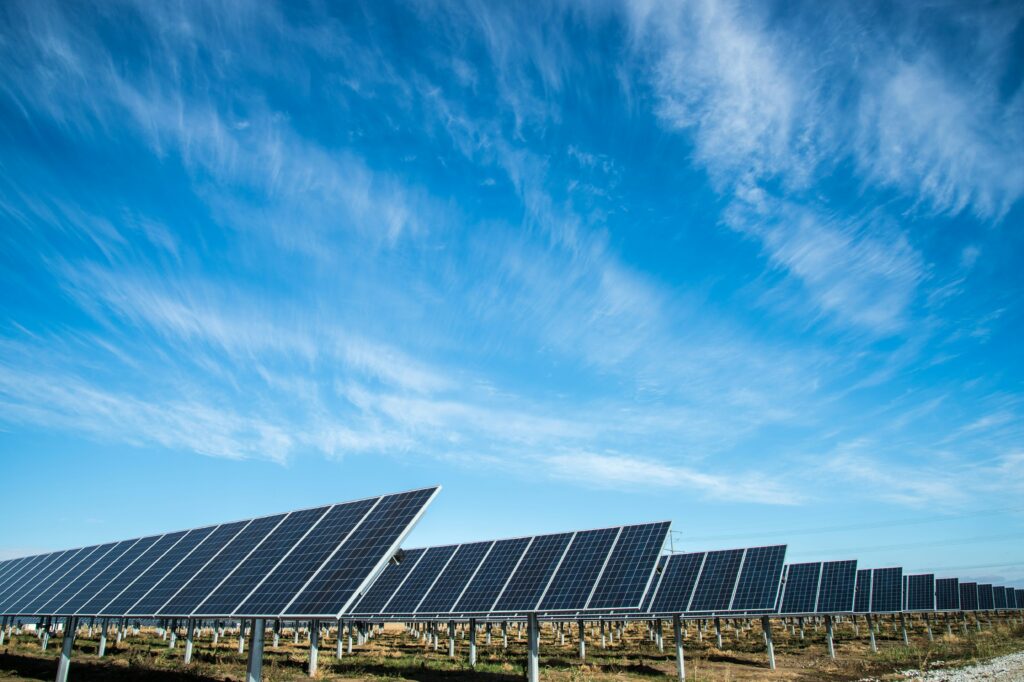Outdoor solar lights have quickly become an eco-friendly solution to lighting gardens, driveways and pathways alike. Leveraging the sun’s power without wiring or batteries to illuminate dark corners without using electricity for illumination purposes – solar lighting provides light without these hassles being involved!

In this comprehensive guide to outdoor solar light we explore their workings as well as costs,high-quality,y options available and other key considerations to keep in mind before purchasing one – along with answering some frequently asked questions to make an informed decision when making this investment decision.
Table of Contents
How Do Solar Lights?
These solar lights rely on basic principles of solar energy for power. Here is an in-depth breakdown of their components and functions:
1. Solar Panels (SPV)
Solar panels, located atop light fixtures, capture sun throughout the day to convert it into electrical energy. Made up of photovoltaic cells which convert light energy directly into power source; solar energy production begins here!
Materials: Solar panels typically made of silicon are highly efficient at absorbing sunlight; other technology, like thin-film panels can be lighter but may be less efficient at collecting sun energy.
2. Battery Storage
The primary function of battery storage for solar panels is as backup.
Solar panels capture electrical energy which is then stored in a rechargeable battery to power lights when darkness sets in. This battery acts as the source for light during night time hours.
Common battery types include NiMH (Nickel-Metal Hydride) and Li-ion batteries; NiMH being more common among budget models while Li-ion offers longer runtime and improved performance.
3. Light Sensor
Function:
Most lights include an automatic light sensor to sense when darkness has fallen and switch on their light automatically when needed, helping conserve battery power by only lighting when required. These features make solar lighting efficient use., as it only operates when necessary and saves on battery consumption costs.
Some models include a timer function to allow you to set specific times when the light should turn on and off.
Mid-Range Solar Lights
Price Range: $30 to $75 Description: Mid-range lights offer higher quality and more features compared to basic models, providing an ideal balance between cost and performance. They boast higher brightness as well as better energy efficiency ratings.

Improved materials such as stainless steel or high-grade plastic are used, while additional features such as motion detectors or brightness settings allow users to customize the lighting experience.
High-End Solar Lights
Price Range: $75 – $200+
Description: High-end solar lights are created for those seeking superior performance and aesthetics in lighting solutions, offering advanced features with long lasting durability.
They may feature: ecologique Advanced solar panels can optimize energy conversion.
High-Quality Solar Lights o Utilizing high-grade construction materials such as metal and glass for maximum durability, these lights boast additional features like remote controls, multiple lighting modes, and longer lasting batteries – perfect for providing security lighting in a range of outdoor situations.
Searching For Superior Performance And Design Solar Lights To Consider:
1. LITOM Original Solar Lights (price range from 35-50 USD).
Additional Features of These Luxeon Original Lights Include
Wide-Angle Illumination: Covers more area compared to conventional solar lights.
High Brightness: Equipped with 24 LEDs for effective and bright illumination.
Durable Design: Waterproof and weather-resistant to withstand all conditions – perfect for patios, driveways and garden paths. mes 2. Ring Solar Pathlight, Price range is between $75 – $100
Integral Security: Works seamlessly with Ring security systems for enhanced protection.
Adjustable Brightness: Adjust lighting according to individual needs for customized illumination. High-Quality Build: Modern aesthetic combined with durable design features make these solar pathway lights suitable for security-focused illumination or decorative paths.
Best Used In Security Lighting and Path Decoration
GIGALUMI Solar Pathway Lights [price range of $50 – 80 per set).
With features including adjustable brightness levels that meet most lighting scenarios as well as its integrated security capabilities, adjustable brightness adjustment capabilities as well as its modern aesthetic design features ensure an ideal lighting solution and decorative paths!
Beautiful Design:
Offers a warm glow with an attractive appearance.
Easy Installation: No wiring necessary to set it up easily.
Durable Materials: Crafted from stainless steel ensure longevity for this decorative lighting option, ideal for garden paths and decorative lighting applications.
Best Used With: Garden Paths and Decorative Lighting Applications, as it requires no electricity connection during setup and is ideal for decorative lighting uses like garden paths.
4URPOWER Solar Lights Price Range $40-60 (per Set of 4)
Bright Light: Packed with eight LEDs for powerful illumination, these adjustable solar panel lights ensure optimal sunlight exposure while their weather resistant construction withstands various climate conditions. They make great security or pathway lighting solutions as well as being easy to operate when needed. With each solar light purchase come some considerations that need to be kept in mind:

Bright light quality: Adjustable solar panel size for optimal sunlight exposure and weather-resistant construction to meet various weather conditions are just three main areas to consider when purchasing solar lights for paths, security lighting, etc.
Recommended Use Case: Pathways or security lighting
Best For: Pathways or security lighting
What should Be Consider When Selecting Solar Lights?
Factors to Consider When Selecting Solar Lights For Pathways Security Lighting Solutions when purchasing these lights as Security lights on Pathways which you should consider When purchasing lights (Adjustable Solar panel ensure optimal sun exposure ensuring optimal sunlight exposure Ensure optimal exposure from its adjustable solar panels)

Weather Resistant construction ensures optimal sunlight exposure from its adjustable solar panels while weather resistance (built-resistant against various conditions withstand various climate conditions!
Built To Last Weather Resistant Built to Withstand Varying Weather Conditions.
WHY NOT BEST?
chaudiere When selecting Solar Lighting Solutions When Looking Solar Lighting. :
Security Lighting…………………… Considering Solar Lighting Solutions when Shopping
Consider these factors when purchasing outdoor solar lights:
- Brightness L umbers (lumens): Lumens measure these lights’ brightness. A higher lumen rating results in brighter illumination – typically 10-60 lumens is enough for pathways while 200+ lumins may be necessary to provide security lighting.
- Deliberate on Your Purpose for Lighting: By first considering its purpose (e.g. ambiance or security), select an appropriate brightness level.
Battery Life:
Battery capacity is another critical consideration – look for lights whose batteries last 8-12 hours on full charge to maximize illumination in your nighttime activities.
Recharge Time: It is important to consider how long it will take the battery of a solar light to recharge in daylight; effective lights should fully charge after six to eight hours of exposure to direct sunlight.
Material Quality Durability:
Lights constructed of higher-grade materials such as stainless steel or high-grade plastic tend to outlive cheaper options when it comes to longevity and withstanding harsh weather conditions better.
Waterproofing: Make sure the lights are approved for outdoor use and waterproof or at least water-resistant.
Aesthetics: Choose lights that complement your outdoor space in terms of style – solar lights can come in modern, traditional or decorative models to choose from.
Functionality: Some lights offer adjustable features like brightness settings or temperature. Take into consideration which features will best meet your needs.
5. Installation
Ease of Installation: Most solar lights can be easily set up without wiring requirements, making setup straightforward for even novice DIY-ers. Read over your instructions carefully to make sure the process goes as smoothly as possible and without professional help needed for setup.
Location:
To ensure maximum performance from solar lights, place them in areas receiving adequate sun. Avoid placing lights under shaded spots where solar cells won’t receive sufficient lighting.
Installation: It is best practice to install lights in locations which receive ample sunshine in order to receive adequate illumination from their solar panel(s).
Placement: When selecting locations for installation of lights ensure they receive plenty of natural lighting for maximum effectiveness – avoid dark or shaded places which won’t receive enough direct sun light for optimal performance of their solar panel(s).
Install lights accordingly for optimal performance from their solar panel(s).
Installation: When placing them make sure their solar panel receives enough exposure by placing in places receiving adequate amounts from their solar panel(s).
Position Ensure lights receive adequate amounts of sunlight so as to obtain maximum performance by selecting locations suitable for optimal performance by making sure solar panel(s) receiving sufficient sun light as solar panel(s receive sufficient direct sun. Avoid shaded places as solar panel(s won’t receive sufficient sun.
Conclusion
Solar lights offer an eco-friendly and cost-effective solution for lighting outdoor spaces, providing beautiful illumination while being eco-friendly and cost-effective. Understanding their operation, costs, and factors that matter when making informed choices will enable you to make an informed decision when selecting solar lighting options that suit you – there’s sure to be one perfect for any budget or environment! With so many high-quality options to choose from ranging from basic path lights to advanced security solutions, there will surely be one to fit.
FAQ’s:
1. How long do solar lights last?
This depends on the quality and design of each component used in their assembly; on average they typically last between 2-5 years with LED bulbs lasting 50,000+ hours while batteries and panels may need replacing sooner than that.
2. Do solar lights work in cloudy weather?
Yes, solar lights do work during cloudy conditions but their performance may be reduced. While solar panels still capture some sunshine on overcast days, the amount of energy collected may be less compared with on clear ones.
* 3. Can solar lights be used during the winter season?
While solar lights can certainly be utilized during this time, their performance could be affected by shorter daylight hours and potential snow cover reducing sunlight absorption into solar panels. To optimize sunlight absorption ensure panels remain free from snow accumulations or debris so as not to compromise solar absorption and efficiency.
* 4. How Can I Maintain Solar Lights?
Routine care of solar lights should be minimal. Clean the panels often using a soft cloth to remove dirt and debris, check batteries regularly, replace as necessary, and ensure lights receive ample sunlight.
* 5. What Should I Do If My Solar Lights Aren’t Working?
To troubleshoot solar lights that have stopped working, first, make sure these items are checked:
Solar Panel: Check that it receives sufficient sunlight by cleaning and placing properly;
Battery (if required ), inlocui Battery Replacement Cost, and Connection Security before performing further investigation on your lights.
Light Sensor: When checking for obstruction or coverage on a light sensor, be certain that its functionality remains free from obstruction and coverup.
6. Are solar lights environmentally friendly?
Yes, solar lighting can help the planet in many ways. They utilize renewable solar energy instead of fossil fuels and therefore lower greenhouse gas emissions significantly while helping lower energy costs as they use renewable power sources and are frequently made of recyclable materials.
7. Can solar lights be installed in shaded areas?
To achieve optimal performance, solar lights should ideally be placed in areas receiving direct sunlight; while some models can withstand partial shade for partial illumination purposes. They may still work, though less efficiently in places with limited sun. When placing lighting solutions for heavily shaded spaces it would be prudent to opt for alternative solutions (ie mini LED).
One Response